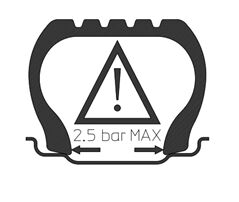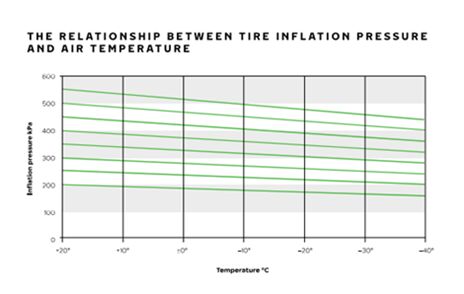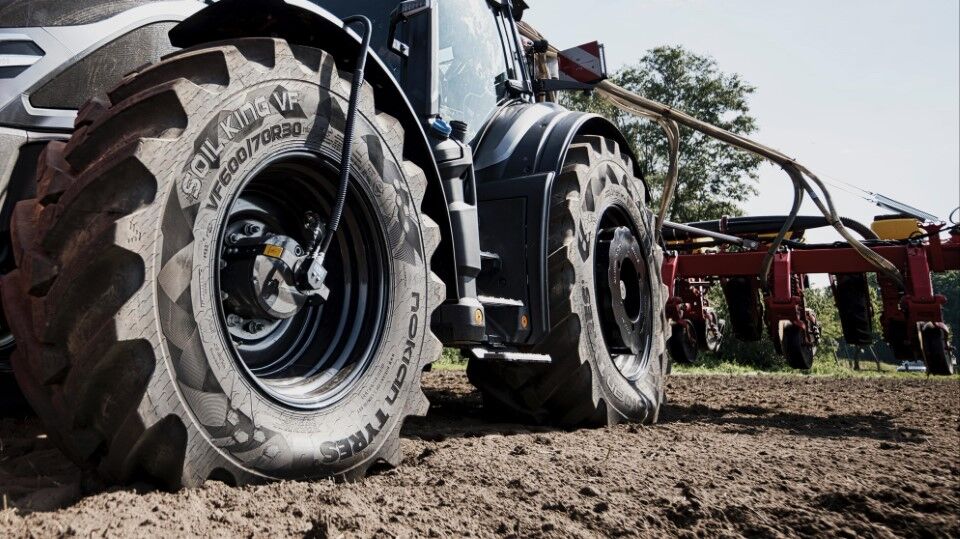
Tire pressurizing entails the biggest occupational safety risks in the tire industry. These risks can be minimized by deploying the right work methods and exercising due care and caution.
The most important safety instructions for tire pressurizing:
- Check the tire mounting before inflating
- Use a safety cage whenever possible
- Inflate the wheel on a mounting machine or mounted on the vehicle
- Stand far enough from the wheel, on the tread side
- If you detect something unusual, deflate the tire and check the rim and mounting.
Above all, always concentrate fully on what you are doing!
Risks of under- and overinflation
Exceeding the recommended tire pressure poses a threat during the pressurizing process but also when the tire is in use under a load of a tractor, trailer, truck, or other heavy machinery.
Overinflating a tire can:
- Create stress on the tire construction
- Diminish tire traction and grip
- Expose the tire to damage from cuts and impacts
To avoid exceeding the tire’s recommended maximum inflation pressure for bead seating, look for this symbol in the tire sidewall. The inflation pressure value (2.5 bar in the example) must be the same as specified by the tire manufacturer.

Just like overinflation, using too low tire pressures can damage the tire or cause excessive wear. Underinflation can:
- cause irregular and uneven wear
- cause the tire sidewall to crack
- result in ply separations in the tire
- loosen and break construction cords
- contribute to carcass fatigue and belt edge separation
If the tire is used with excessive or too low inflation pressures, it should be removed from service if the tread has worn to its minimal depth or the tire has signs of damage, such as cuts, cracks, and bulges.
Similarly, overloading the tire or using it at excessive speeds can lead to premature wear and damage. Therefore, it is always important to use adequate tires with the correct speed rating and load index.
Tire pressures in winter
Check the inflation pressures of your tires at regular intervals and perform visual checks daily and when the tires are in use. Even a slow leak can damage the tire sidewall or lead to tube failure before the under-inflation is noticeable. Address repairable damage immediately to obtain a regular tire life. Paying extra attention to appropriate tire pressures is worth the effort due to safer and more efficient working, lower tire costs, lower fuel consumption and less unexpected downtime.
Additionally, when operating machinery in winter conditions, adjust tire pressures according to the temperature. As the temperatures drop, so do tire inflation pressures. This means you should counteract the effects of low temperatures by raising the tire pressure.

Use the diagram above to adjust tire inflation pressures according to the temperature. Make the adjustments indoors and before operating the tire, as the tire’s temperature rises during use and can give inaccurate results if the tire is not cold. Only a few moments of working can lift the inner temperature significantly.
Tire pressure table
Use the tire pressure table below to convert different pressure units. The Nokian Tyres Technical Manual helps you find the correct inflation pressure for different Nokian Tyres products.

Please remember that it is the driver’s responsibility to ensure their tires are safe and suitable for their vehicle and to follow the vehicle’s manufacturer´s guidelines for proper use and maintenance. Consult your closest Nokian Tyres dealer or your vehicle’s manufacturer for specific advice.


